This property may be important and deserving of preservation for its artistic, historic, religious or social significance. This property is invaluable and must be preserved for the appreciation and investigation of future generations. It is not enough for conservators to properly handle a given object or objects; they must also be committed to the dissemination of new information, the support of fellow professionals and the promotion of educational opportunities within the field.
Purchase the Standards & Guidelines for Preservation (opens new window)
Virtually all professional disciplines, construction trades and major industries have standards and practices that are universal for their respective groups. The development of these criteria determines the measure of value and quality that the consumer can reasonably expect when purchasing goods or services that the industry or profession has to offer. Further, the standards and practices protect the members of the industry as well, by establishing a standard so that the practitioners can address the needs of the owners and the cultural property in a consistent, professional manner. It is imperative that all members of the industry exhibit the courage and integrity to adhere to the standards and practices once they are established and to demand that fellow craftspersons do the same.
The Stained Glass Association of America, in its role as the voice of the stained glass profession in America, sets forth herein the Preservation Standards, Standards for Professional Conduct, and Guidelines for Preservation Techniques to assist responsible conservators of stained glass windows that constitute a major and important facet of our cultural property.
The Overarching Philosophy of Conservation/Restoration/Repair
The Cardinal Rule in the Philosophy of Conservation/Restoration/Repair is:
DO NO HARM
- The original fabric should be re-used. If this is not feasible, that which is not used must be returned to the owner, in the hope it can be used in the future.
- The work should be documented so that future interested parties know what was done in the past.
- Unless imminent loss will result, all methods used should be reversible.
- The windows should remain within their original architectural context.
The SGAA Offices serve as a neutral resource to all caretakers of architectural art glass to further help demystify the processes of stained glass maintenance and restoration so that every effort can be made to mitigate the harmful impact of improper window care.
Topics Covered
The topics covered in the 2012 edition of the Standards and Guidelines for the Preservation of Leaded and Stained Glass Windows includes definitions, preservation philosophies and standards, contracts, guidelines for the preservation process, including support systems, documentation, and protective glazing, cleaning agents, and more.
The last section includes a sample of what to include when putting out a call to find a studio in either a Request for Qualifications (RFQ) or a Request for Proposal (RFP).
The Stained Glass Association of America (SGAA) is a 120-year-old organization focused on industry safety standards, quality work and believes educating the public is an important component of our mission as it impacts the public ability to help ensure that they are getting the best quality work that they can afford. We are here as a continuing resource to organizations and communities if at any point they need more specific information about stained glass preservation or if they need assistance navigating their need to hire an expert.
Topics covered:
- Preservation Standards
- Standards for Professional Conduct
- Contracts
- Conflicts of Interest
- Legal Disputes
- Laws and Regulations
- Misconduct
- References
- Administration
- Security
- Authentication
- Preventive Maintenance
- Techniques and Materials
- Guidelines for Preservation Techniques
- Documentation
- Dismantling
- Cleaning
- Broken Glass
- Copperfoil Repair
- Silicone Edge-gluing
- Epoxy Edge-gluing
- Missing glass
- Releading
- Waterproofing (Cementing)
- Support Systems
- Reinstallation
- Final Documentation
- Protective Glazing
- Additional Information
- Glass
- Setting Materials
- Conservation Tape
- Photographic Film
- Paper
- Cleaning Agents
- Silicone
- Epoxy
- Lead Cames
- Flux
- Solder
- Waterproofing Compound
- Copper Tie Wires
- Support Bars, Tees and Fins
- Suggested Standard Notation
- Symbols
Environmental Protective Glazing
As part of our industry’s Reference and Technical Manual, first published by the Stained Glass Association of America (SGAA) in 1988 and updated in 1992, the issue of Protective Glazing was tackled according to the leading research and practices of the day. The same philosophies, materials, and information are still valid today (2023). In the 30 years since publication, however, misinformation and confusion has continued to dominate the conversation in regards to protective glazing solutions. This might be the result of the fact that there is no “one-size-fits-all” solution. There is no magic solution for increased efficiency, and protective glazing is not a replacement for actual restoration.
To try to provide some relief from the misinformation that abounds for stewards and caretakers trying to make a decision, we have put together a brief guide based on the continuing, valid information presented in Chapter 20, Section A, Number 4 “Protective Glazing” Chapter in our 1992 “SGAA Reference & Technical Manual” in combination with today’s best practices and material information about the most commonly available options utilized across the country. This guide is not intended to be exhaustive but should be an adequate reference when used in conjunction with trusted advice from an industry expert, such as an Accredited Professional Studio.
In this guide, you find information on the basic philosophy of Environmental Protective Glazing, sometimes referred to interchangeably as ‘Secondary Glazing’ or simply ‘Protective Glazing.’ You will also see information on an overview of information in regards to ventilation, condensation, materials commonly used, their pros and cons and the lifespan of those materials, and a note on energy efficiency.

